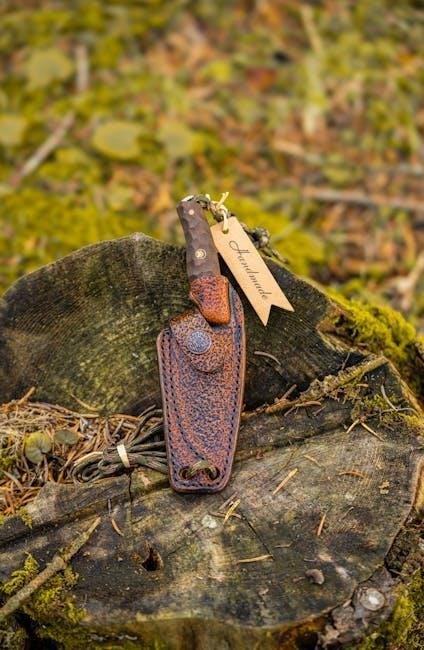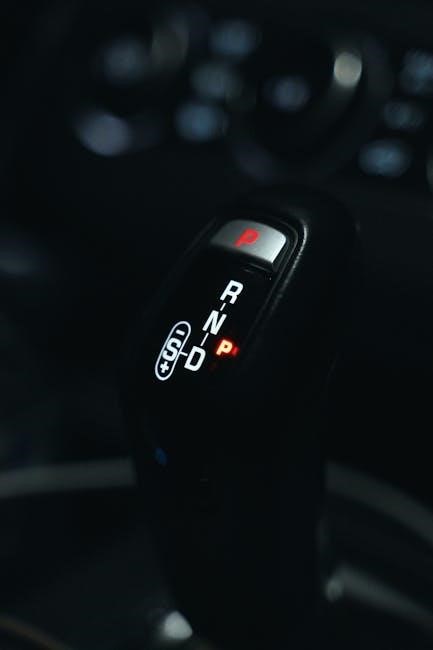Manual Transmission Problems: A Comprehensive Guide
Despite their inherent durability, manual transmissions can face problems from wear, misuse, or neglected maintenance․ Such issues potentially impact performance and overall reliability․ Understanding these common problems helps owners address them promptly․ This guide aims to provide insight into common issues and solutions․
Manual transmissions, also known as stick shifts, require the driver to manually select gears using a clutch and gearshift․ This provides direct control over the vehicle’s power and speed․ Unlike automatic transmissions, which shift gears automatically, manual transmissions offer a more engaging driving experience and are often preferred by enthusiasts for their responsiveness and efficiency․
The driver engages and disengages the clutch to connect or disconnect the engine from the transmission, allowing for gear changes․ Lower gears provide more torque for acceleration and climbing hills, while higher gears are used for cruising at higher speeds․ The direct connection between the engine and wheels in a manual transmission can result in better fuel economy compared to automatics․
However, manual transmissions also require more driver skill and coordination․ Common problems can arise from wear and tear, improper use, or lack of maintenance․ Understanding these issues is crucial for maintaining the performance and longevity of a manual transmission vehicle, ensuring a smooth and enjoyable driving experience․
Common Manual Transmission Problems
Manual transmissions, while durable, are susceptible to various issues stemming from wear, misuse, or lack of maintenance․ These problems can manifest in different ways, affecting the vehicle’s performance and drivability․ Recognizing these common issues early can help prevent more extensive damage and costly repairs․

One frequent problem is hard shifting, where engaging gears becomes difficult․ Gear slipping, where the transmission unexpectedly pops out of gear, is another concern․ A sticking clutch, characterized by delayed or incomplete engagement, can also impede smooth driving․
Unusual noises, such as grinding during shifting or whining during operation, often indicate internal problems․ Fluid leaks can lead to decreased lubrication and potential damage․ Inability to shift gears altogether renders the vehicle undrivable․ Clutch-related issues, including slipping or sticking, are also common․ Addressing these problems promptly ensures the longevity and optimal performance of the manual transmission, maintaining a reliable and enjoyable driving experience․
Regular maintenance and timely repairs are crucial for mitigating these common manual transmission problems․
Hard Shifting Into Gear
One of the more prevalent manual transmission problems is experiencing difficulty when attempting to shift into gear․ This issue, commonly known as “hard shifting,” can manifest as increased resistance when moving the gear shift lever, making it challenging to engage the desired gear smoothly․

Several factors can contribute to hard shifting․ Often, it stems from improperly adjusted linkage between the gear shift lever and the transmission itself․ This misalignment increases the force required to shift gears, leading to a stiff or resistant feel․ Bent, jammed, rusted, or otherwise damaged shift linkage components can also impede smooth movement․
Internal transmission issues, such as worn synchronizers, can exacerbate hard shifting․ Synchronizers are responsible for matching gear speeds during shifts, and when they degrade, engaging gears becomes difficult․ Low or contaminated transmission fluid can also hinder smooth operation, contributing to hard shifting․
Addressing hard shifting promptly is crucial to prevent further damage to the transmission․ Diagnosing the root cause and performing necessary repairs, such as adjusting the linkage or replacing worn components, can restore smooth and effortless shifting․
Gear Slipping or Popping Out of Gear
Gear slipping, or the more alarming “popping out of gear,” is a serious manual transmission problem where the vehicle spontaneously disengages from the selected gear, often reverting to neutral․ This unexpected disengagement can occur during acceleration, deceleration, or even while maintaining a constant speed, presenting a significant safety hazard․
One common cause of gear slipping is a worn-out or damaged shift linkage․ The shift linkage connects the gearshift lever to the gear selector within the transmission․ When this linkage becomes loose, bent, or broken, it may fail to hold the selected gear securely, leading to slippage․
Another potential culprit is a broken or weak spring within the transmission’s shift rail․ These springs are part of the mechanism that locks the transmission into each gear․ If a spring fails, the gear may not stay engaged properly, resulting in it popping out․
A failing pilot bearing can also contribute to gear slippage․ The pilot bearing allows for a speed difference between the transmission shaft and the crankshaft․ If the pilot bearing is defective, it can cause vibrations that lead to gear disengagement․
Prompt diagnosis and repair are crucial to address gear slipping, ensuring driver safety and preventing further transmission damage․
Sticking Clutch
A sticking clutch is a frustrating issue where the clutch pedal fails to return smoothly after being depressed, or remains partially engaged even when released․ This can make shifting gears difficult or impossible, and can also cause the vehicle to creep forward even when the clutch is fully depressed․
In older vehicles, a sticking clutch was often a mechanical problem, possibly due to worn or binding linkage components; However, newer vehicles commonly use hydraulic clutches․ In these systems, a sticking clutch often indicates issues with the hydraulic cylinders․ Leaking hydraulic fluid can prevent the cylinders from building sufficient pressure, causing the clutch to stick․
A sticking clutch can also indicate that the clutch plate is not releasing properly from the flywheel․ The flywheel’s job is to ensure consistent torque and also stabilize the engine․ If the clutch plate cannot disengage from the flywheel, shifting gears gets difficult․
The clutch components might need adjustments to components like the bearing, pressure plates, disc, and flywheel․ Addressing a sticking clutch promptly is important to prevent further damage to the transmission and ensure smooth, safe driving․
Grinding Noise During Shifting
A grinding noise during shifting is a concerning symptom in a manual transmission, typically indicating internal wear or damage․ This noise usually occurs when attempting to engage a gear, and it suggests that the gears are not meshing together smoothly․ Several factors can contribute to this unpleasant sound․
One common cause is worn or damaged synchronizers․ Synchronizers are crucial components that synchronize the speeds of the gears before they engage, allowing for smooth shifting․ Over time, synchronizers can wear out, particularly if the transmission experiences frequent or aggressive shifting․ When synchronizers fail, the gears clash as they attempt to engage, producing the characteristic grinding noise․
Using the wrong type of transmission fluid can also lead to grinding․ Incorrect fluid may not provide adequate lubrication․ A broken dog tooth within the transmission can also cause grinding․ These teeth lock gears together; damage prevents smooth engagement․
Addressing grinding noises promptly is crucial to prevent further damage․ Ignoring the issue can lead to more extensive and expensive repairs․ A mechanic can accurately diagnose the problem and recommend the appropriate solution․
Fluid Leaks
While less frequent than in automatic transmissions, fluid leaks in manual transmissions can signal underlying issues․ Manual transmissions rely on lubricant to protect components․ Leaks compromise this lubrication, leading to increased wear and potential damage․ Identifying and addressing leaks promptly is essential for maintaining transmission health and preventing costly repairs․

One potential source of leaks is seals․ Seals prevent fluid from escaping the transmission housing․ Over time, these seals can degrade due to age, heat, or physical damage, leading to leaks․ Another area prone to leaks is the gasket between the transmission case halves․ If this gasket fails, fluid can seep out․
Hydraulic clutches, common in newer vehicles, are susceptible to leaks․ A leaking hydraulic clutch cylinder causes pressure loss, affecting clutch performance․ Older cars use cables, reducing this risk․
Addressing fluid leaks promptly is crucial․ Low fluid levels can lead to increased friction, overheating, and accelerated wear of internal components․ Regular inspections and timely repairs can prevent significant transmission damage․ Monitoring fluid levels and addressing leaks swiftly can extend the life of manual transmission․
Inability to Shift Gears
The inability to shift gears in a manual transmission can be a frustrating and potentially immobilizing problem․ This issue can stem from various underlying causes, affecting the driver’s ability to engage or change gears smoothly․
One common culprit is a problem within the clutch system․ If the clutch isn’t fully disengaging, the driver will have difficulty selecting gears․ This can be due to issues like a sticking clutch plate, a worn clutch disc, or problems with the hydraulic clutch linkage․ Clutch adjustment is essential for proper engagement and disengagement․
External shift linkage issues can also prevent shifting․ Damaged, bent, or rusted linkages hinder movement between the gear shift lever and the transmission․ Internal transmission problems like worn synchronizers or damaged gears can also contribute to shifting difficulties․
Low transmission fluid can make shifting difficult․ Proper lubrication is essential for smooth gear changes․ Addressing this problem early on can prevent major damage․ Resolving the inability to shift gears often requires professional inspection to pinpoint the root cause, followed by targeted repairs or component replacements․
Unusual Noises (Whining, Clunking)
Unusual noises emanating from a manual transmission, such as whining or clunking, often indicate underlying problems within the system․ These sounds shouldn’t be ignored, as they can signal potential damage or wear that needs attention․
A whining noise is commonly associated with worn bearings inside the transmission․ As bearings degrade, they produce a high-pitched whine, especially noticeable during acceleration or deceleration․ Low transmission fluid can also lead to a whining sound, as components lack proper lubrication․
Clunking noises, on the other hand, often point to issues with the gears or the shift linkage․ Loose or worn gears can create a clunking sound when shifting or during operation․ Problems within the shift linkage, such as loose connections or worn components, can also generate clunking noises․
Other noises, like grinding or rattling, might indicate different problems, such as damaged synchronizers or internal components․ Identifying the specific type of noise and when it occurs can help narrow down the source of the problem․ Timely diagnosis and repair are essential to prevent further damage and ensure smooth operation․

Clutch Problems (Slipping, Sticking)
Clutch problems, such as slipping or sticking, are common issues that can significantly impact the performance of a manual transmission․ These problems often stem from wear and tear, improper adjustment, or component failure within the clutch system․
A slipping clutch occurs when the clutch disc fails to properly engage with the flywheel, resulting in a loss of power transfer from the engine to the transmission․ Symptoms of a slipping clutch include a delayed or weak acceleration, increased engine RPMs without a corresponding increase in speed, and a burning smell․ Over time, frequent clutch slippage can cause additional wear to other components․
A sticking clutch, conversely, refers to a clutch that doesn’t fully disengage when the pedal is depressed․ This can make shifting gears difficult or impossible, and can cause grinding noises during shifting․ Sticking can be caused by hydraulic issues, cable problems, or a worn-out clutch disc․
Addressing clutch problems promptly is crucial to preventing further damage․ Depending on the nature and severity of the issue, repairs may involve clutch adjustment, component replacement, or a complete clutch overhaul․
Preventative Maintenance for Manual Transmissions
Preventative maintenance is crucial for extending the lifespan and ensuring the reliable operation of a manual transmission․ Regular maintenance helps prevent common problems, reduces the risk of costly repairs, and maintains optimal performance․
One of the most important aspects of preventative maintenance is regular fluid changes․ Transmission fluid lubricates the internal components, reducing friction and preventing wear․ Over time, the fluid can degrade and become contaminated, compromising its lubricating properties․ It is recommended to change the transmission oil every 45,000 to 60,000 miles, according to autoscope․com․
Additionally, inspect the clutch components regularly and address any problems like a slipping clutch․ Also, check the shift linkage for wear or damage, ensuring smooth and precise gear changes․ Inspecting and maintaining the clutch system are vital for preventing issues like sticking or slipping․ The clutch should be inspected as part of routine maintenance․
By following a consistent maintenance schedule, manual transmission problems can be minimized, preserving the vehicle’s performance and longevity․
Resale Value and Manual Transmissions
The resale value of vehicles equipped with manual transmissions is a topic of interest, especially considering the increasing popularity of automatic transmissions․ While automatic transmissions have become standard in most new cars, many drivers still prefer manual transmission vehicles․ Despite the decline in demand, manual cars may not become extinct because some drivers still prefer the control of a manual car․
Many manual cars, even classic models, are still holding their value․ Some even carry more resale value than their automatic counterparts, especially sports cars․ The transmission of a vehicle is immaterial to what its resale value will be․ Some manual cars are better investments than automatic cars․
For instance, the 2015 manual Holden Commodore SS V Redline had a purchase price of 53,990, while the automatic Redbook had a purchase price of 56,190․ Currently, the Commodore retains up to 33,800 in the market while the Redbook has a resale value of 33,500․ This shows that some manual cars can hold their value well, depending on the model and overall condition․

